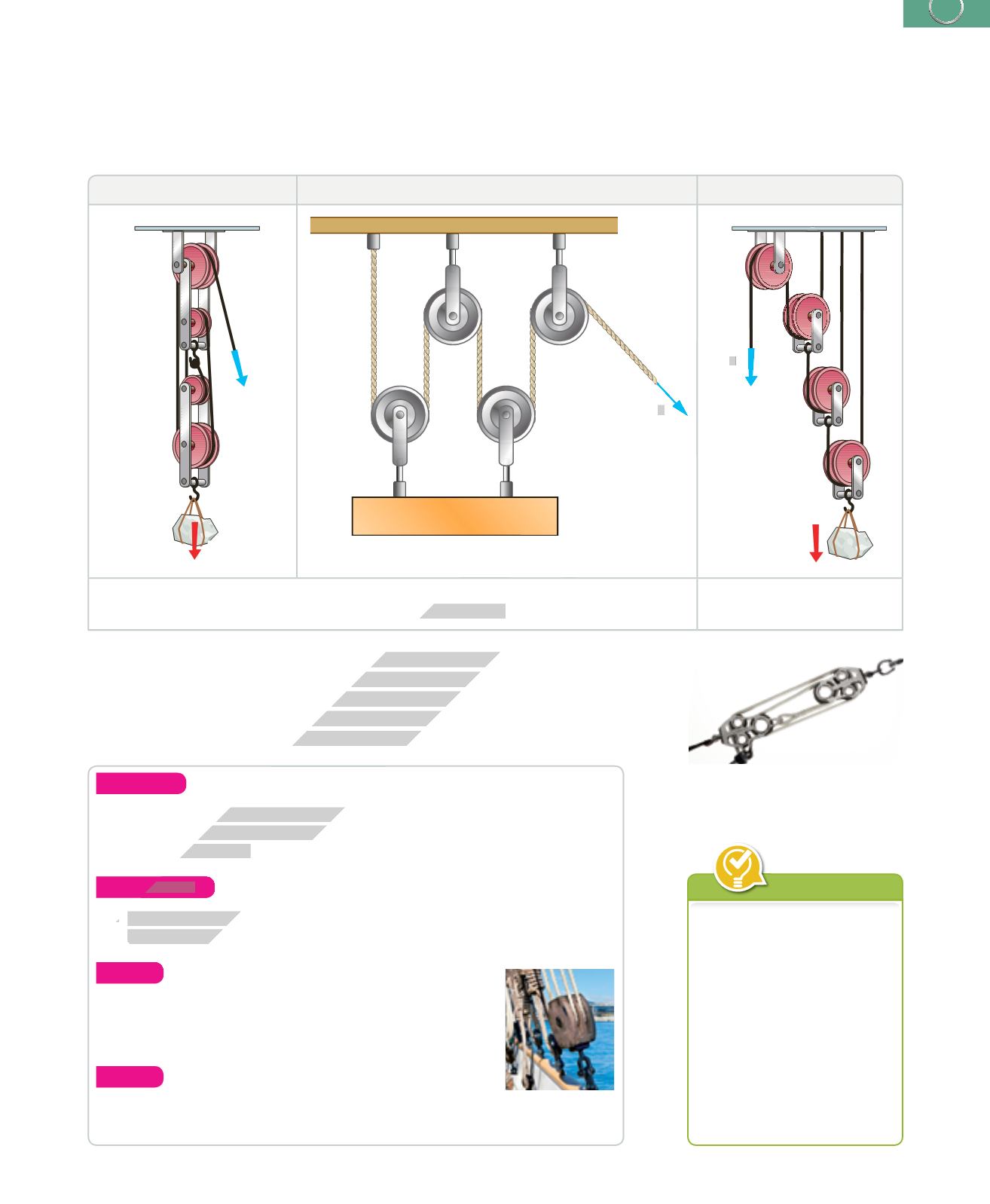
107
5. Mechanisms
www
Analyse
10.
Study the pulley systems on this page. In each case, how much will the
load rise if you pull down the rope one meter? How much force will
you need to use?
Understand
11.
Look again at the pulley systems on this page. For each one, how
many newtons of load would create a resistance of 900 newtons?
Apply
12.
Look at the pulley systemon a sailing ship. Howmany
times does the rope go up and down? How much
force is needed for a resistance of 400 newtons?
Apply
13.
Look for more information about block and tackle mechanisms. In
addition to pulleys, what other things can they include?
Compound pulley systems
A compound pulley system is a combination of fixed and movable pulleys. It is also
called a
block and tackle system
. The more pulleys there are, the less force we
need to lift the load. We can combine the pulleys in various ways:
Vertical system
Horizontal system
Exponential system
F = R / 2 · n
(
n
= the number of movable pulleys)
F = R / 2
n
Rescue pulley system
F
F
F
R
R
We can make block and tackle systems without pulleys. For example, rock climbers
use carabiners. They are similar to pulleys because ropes pass through them easily.
Some pulley systems are complex, such as systems for elevators or sailing boats.
In those cases, it is difficult to count the movable pulleys. However, we can count
how many times the rope goes up and down (U) and use the equation
F
=
R
/
U.
❚
Levers, fixed pulleys, movable
pulleys and compound pulley
systems are examples of
linear transmission
❚
A lever is inequilibriumwhen
all the opposing moments of
rotation acting on the lever
are equal to each other.
❚
In a pulley system, the
balance between the various
forces depends on the path
that the rope follows.
Key concept
ADVANCE EDITION


